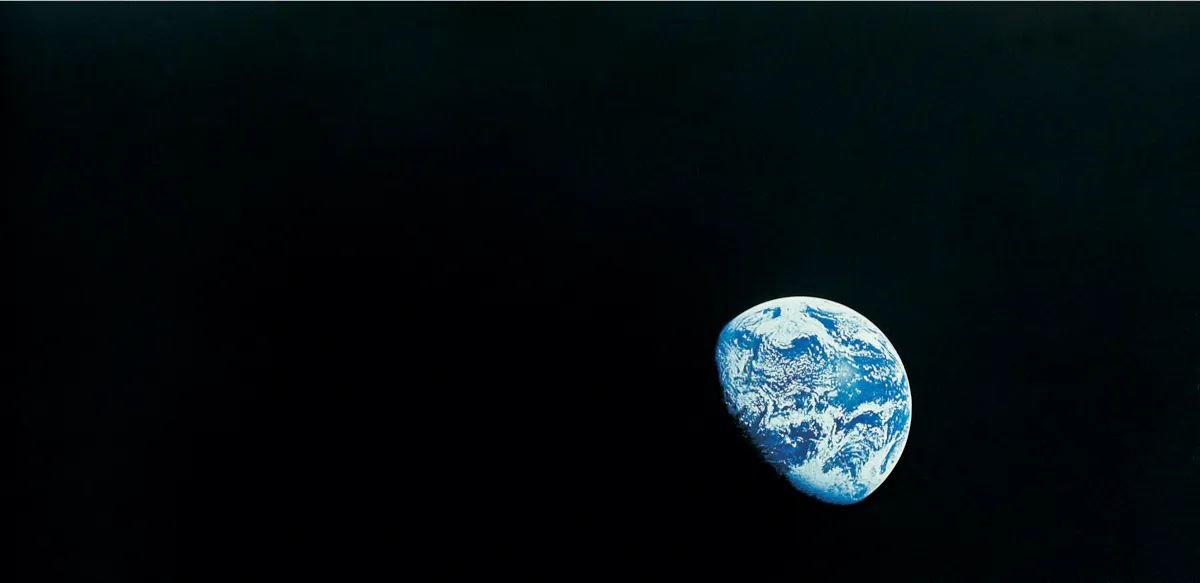Where does the novel Dune sit as a moment in science fiction?
It’s of its time. But it also transcends that time, in a way. I think in the 1960s it was one of what they used to call ‘campus novels’ because every trippy student used to read them. Dune, Lord Of The Rings, Stranger In A Strange Land… all immersive worlds, often with messianic heroes and expanded consciousness. That will be its pin in time. But also, I think it built on a lot of what had been going on in science fiction earlier, and it anticipated what came later.

What were Frank Herbert’s influences?
Herbert was born in 1920, and the Dune saga began with serials published in sci-fi magazines, in around 1963. So he was already 43 years old and he’d clearly grown up on a diet of the magazines and pulp literature that preceded what you might call modern sci-fi. And among the tropes that he picked up was the idea of galactic empires. At one end you’ve got Isaac Asimov and his Foundation series, but there were a couple of more fantastical galactic empire sagas too, such as EE ‘Doc’ Smith’s Lensman saga.
There had also been some world-building exercises before Dune, trying to go beyond the kind of cartoonish world-building of previous generations. Hal Clement’s Close To Critical in 1964 is one example, about a planet with very heavy gravity.

Did he take any inspiration from science?
At the time Dune was being developed, you also had the first space probes to the nearby planets. Today, we’re used to the visions of Mars and Venus we have now, but I think at the time it was quite shocking to find that Mars was an arid desert, and Venus was this hellhole. Previous generations had extrapolated from Earth, so Venus was a hot, wet Earth and Mars a cold, dry Earth – but now they seemed completely different. Also the famous environmental book Silent Spring by Rachel Carson was published in 1962, and I think that was a big eye-opener.
But there’s a specific incident in Herbert’s life that seems to have set him off in this direction. He made his living as a reporter before his fiction writing took off. In 1957, when he was in his 30s, he was sent to write about a system of dunes in Oregon that were migrating and therefore endangering towns.
The US Department of Agriculture were using grasses to try and stabilise the dunes. And Herbert had been really struck by this – modifying an ecology to achieve a goal, as opposed to using technology, such as big fences. He became fascinated by deserts, and developed theories about how major religions often emerged from the deserts, which I guess is true – Islam, for instance. And it’s thought that TE Lawrence – Lawrence of Arabia – was one model for Dune’s hero, Paul Atreides.
Read more:
- Interview: Dune's lead designer reveals inspiration behind the film's look and feel
- Take a look inside the new Dune graphic novel
Dune is often lauded as a pioneering work of ‘ecological science fiction’…
You can see that Arrakis – the planet in Dune – is an ecology. It’s got fairly simple elements but it does actually fit together as a living entity in an authentic way. And where Herbert may have really been a pioneer is showing this complete working world with a reasonably plausible ecology as a single vision. You could argue that it’s like a precursor of the astronaut photographs of the Earth and the Moon – seeing the whole Earth as a system. Dune was published in 1965, a few years before those photos emerged in 1968 with Apollo 8. I think the world was ready for that. We were going to the Moon, we were ready to look back at the Earth and Herbert caught the zeitgeist there.

What notable science fiction works has Dune since inspired?
Certainly Star Wars. I think with George Lucas it’s not just the galactic empire stuff, but he seemed to love desert visuals. Tatooine in Star Wars is a version of Arrakis in a way. But also there’s the other side of Dune – the telepathy and the messianic, superhuman side. Once again there were these in Star Wars, humans with superhuman powers that they have to discoverand master.
Also, the work of Ursula Le Guin perhaps. Her novel The Word For World Is Forest, published in 1972, is Dune with trees. Later on is Kim Stanley Robinson’s Mars trilogy – all about ecologies and building ecologies. And space opera has definitely continued to prosper since Dune. Nowadays, it’s stronger than ever.
- This article first appeared inissue 369ofBBC Science Focus Magazine–find out how to subscribe here